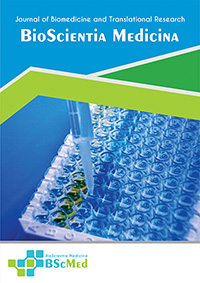Main Article Content
Abstract
Background: In men with untreated Human Immunodeficiency Virus (HIV), the mechanisms underlying testosterone deficiency remain incompletely defined. Chronic inflammation is hypothesized to be a key factor in disrupting the hypothalamic-pituitary-gonadal (HPG) axis. This study aimed to investigate the association between the pro-inflammatory cytokine tumor necrosis factor-alpha (TNF-α) and the HPG axis and to assess this relationship while accounting for nutritional status in ART-naïve men.
Methods: We conducted a cross-sectional study of 40 ART-naïve men with HIV in Palembang, Indonesia. We measured serum total testosterone, Luteinizing Hormone (LH), TNF-α, Interleukin-6 (IL-6), and high-sensitivity C-reactive protein (hs-CRP). Hypogonadism was classified as primary (low testosterone, high LH) or secondary (low testosterone, low/normal LH). Spearman’s correlation was used to assess bivariate relationships. A multiple linear regression analysis was performed to determine the independent association of TNF-α and Body Mass Index (BMI) with testosterone levels.
Results: All 40 participants (100%) presented with secondary (hypogonadotropic) hypogonadism, characterized by a median total testosterone of 6.48 pg/mL and an inappropriately normal median LH of 3.86 mIU/mL. Serum TNF-α was significantly elevated (median: 10.32 pg/mL). A moderate negative correlation was found between TNF-α and total testosterone (ρ = -0.411, p = 0.008). In the multivariate regression model, both higher TNF-α levels (β = -0.38, p = 0.011) and lower BMI (β = 0.45, p = 0.003) were significant, independent predictors of lower total testosterone. The model explained 34.6% of the variance in testosterone levels (Adjusted R² = 0.346).
Conclusion: Our findings demonstrate a universal prevalence of secondary hypogonadism in ART-naïve men with HIV. This HPG axis dysfunction is strongly and independently associated with both the magnitude of systemic inflammation, marked by TNF-α, and the severity of malnutrition. These results suggest a complex interplay where inflammation and poor nutritional status act as distinct, synergistic contributors to the profound endocrine disruption seen in untreated HIV infection.
Keywords
Article Details
As our aim is to disseminate original research article, hence the publishing right is a necessary one. The publishing right is needed in order to reach the agreement between the author and publisher. As the journal is fully open access, the authors will sign an exclusive license agreement.
The authors have the right to:
- Share their article in the same ways permitted to third parties under the relevant user license.
- Retain copyright, patent, trademark and other intellectual property rights including research data.
- Proper attribution and credit for the published work.
For the open access article, the publisher is granted to the following right.
- The non-exclusive right to publish the article and grant right to others.
- For the published article, the publisher applied for the Creative Commons Attribution-NonCommercial-ShareAlike 4.0 International License.





